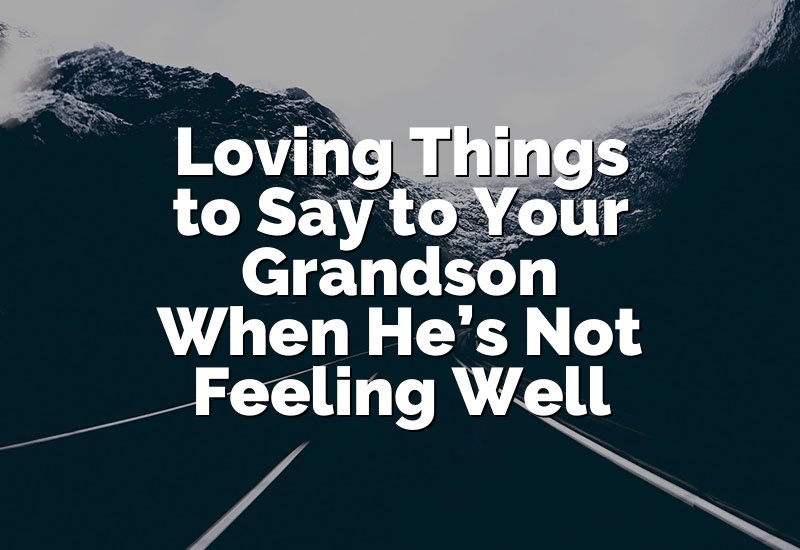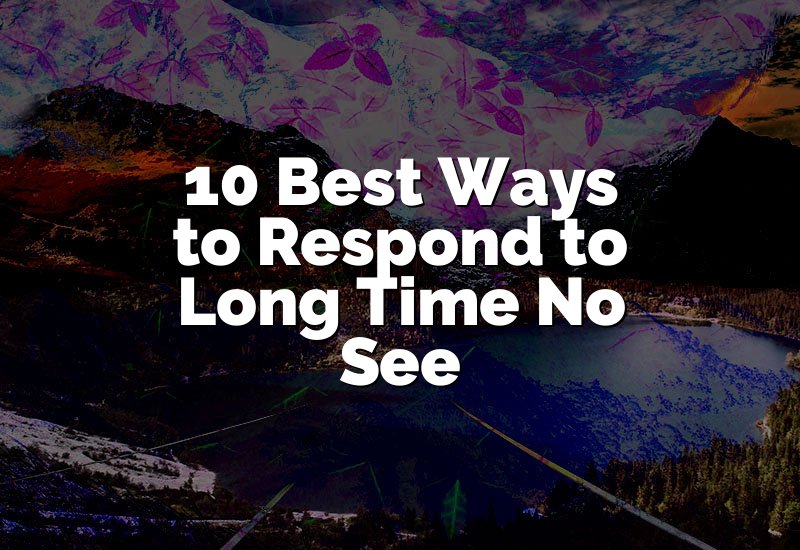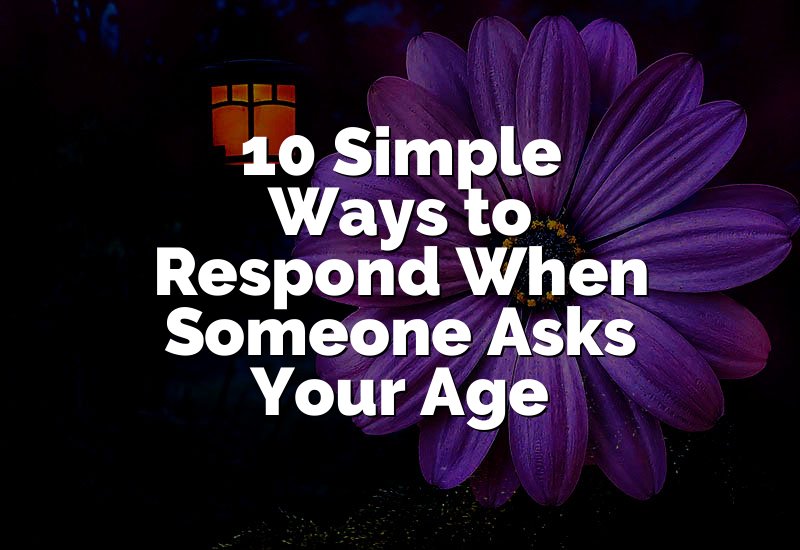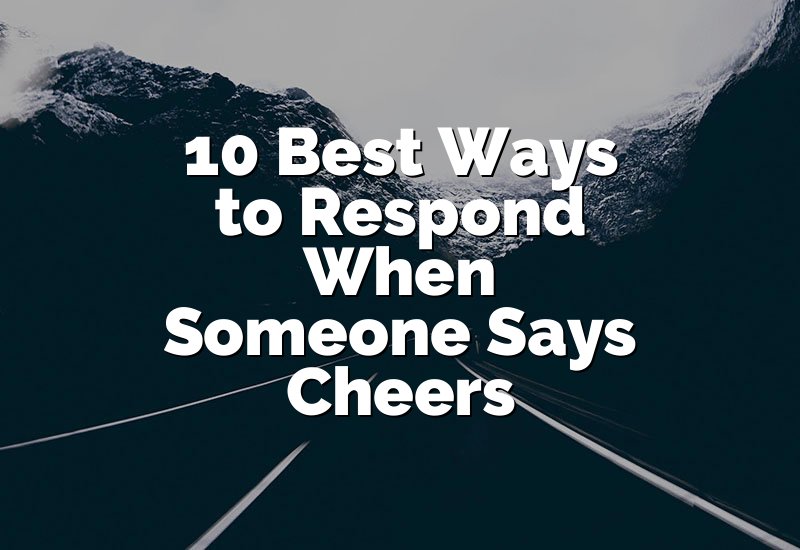If you’ve ever found yourself wondering how to brighten someone’s morning when they greet you with a cheerful “Buenos Dias,” you’re in the right place. In this guide, we’ve compiled fantastic ways to respond to this friendly greeting. Whether you want to keep it simple, add a touch of humor, or express genuine enthusiasm, we’ve got you covered with easy and delightful ways to say “Good morning” in return. So, let’s dive into these simple and effective responses that will surely make your mornings more enjoyable and your interactions even more pleasant!
Understanding Buenos Dias And Spanish Greetings
What Does Buenos Dias Mean?
The phrase “Buenos Dias” is a common Spanish greeting that translates to “Good morning” in English. It signifies wishing someone a pleasant start to their day and is typically used from sunrise to midday. Similar to other Spanish greetings, “Buenos Dias” reflects the warm and welcoming nature of Spanish-speaking communities.
In Spanish-speaking countries, it is customary to greet one another with “Buenos Dias” as a way of acknowledging and respecting each other’s presence. This simple greeting has the power to create a positive atmosphere and foster a sense of community wherever it is used.
Why Is Greeting Important In Spanish Culture?
Greetings hold significant cultural value in Spanish-speaking countries. They serve as an expression of politeness, respect, and friendliness. Starting conversations with greetings like “Buenos Dias” helps establish positive rapport with locals and showcases your interest in their language and culture.
In Spanish culture, greetings are extended to friends, family, acquaintances, and even strangers. It is considered impolite to overlook greeting someone, as it may be interpreted as a sign of rudeness or indifference. Taking the time to greet others not only shows respect but also acknowledges the importance of human connection and communication in Spanish society.
Greetings also play a role in the concept of “personal space” in Spanish culture. Hugging, kissing on cheeks, or shaking hands are common greetings, and it’s important to be aware of local customs and follow suit. Through greetings, Spanish speakers create a warm and inclusive social environment where relationships can flourish.
Now that you understand the meaning of “Buenos Dias” and the significance of greetings in Spanish culture, you’re ready to embark on your Spanish-speaking journey. Whether you find yourself in Spain, Mexico, or any other Spanish-speaking country, remember the power of a simple “Buenos Dias” to brighten someone’s day and forge connections with the people you meet.
32 Ways to Respond to Buenos Dias
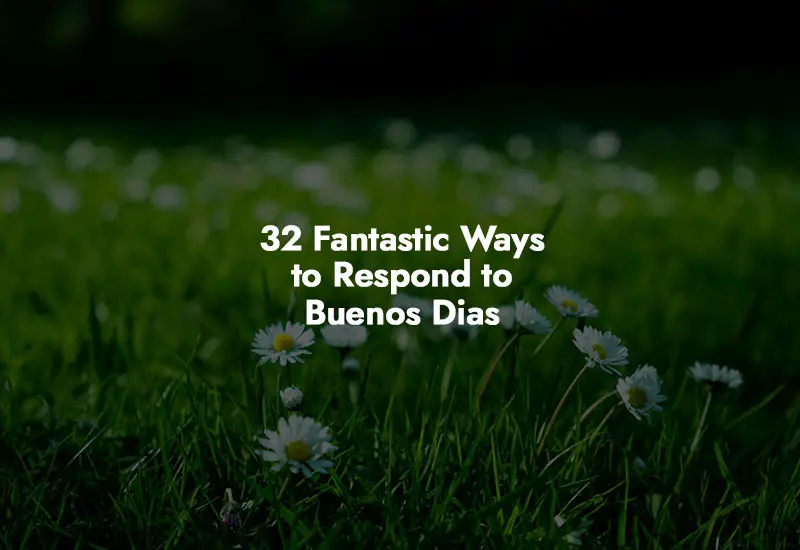
- Hola, ¿cómo estás?
- Buenos días, ¿cómo va todo?
- ¡Buenos días! ¿Qué tal amaneciste?
- ¡Hola! Espero que tengas un excelente día.
- Buenos días, ¿cómo te trata la mañana?
- ¡Saludos! ¿Listo para conquistar el día?
- ¡Buenos días! ¿Algún plan emocionante para hoy?
- Hola, que tengas un día lleno de alegría.
- ¡Buenos días! ¿Qué novedades hay hoy?
- Saludos, ¿cómo comenzó tu día?
- ¡Hola! Que tengas un día lleno de éxitos.
- Buenos días, ¿algún proyecto emocionante en mente?
- ¡Saludos! Espero que hoy sea grandioso para ti.
- Hola, ¿algún motivo especial para sonreír hoy?
- Buenos días, ¿cómo estuvo tu noche?
- ¡Buenos días! ¿Listo para enfrentar nuevos retos?
- Hola, que tengas un día lleno de buenos momentos.
- ¡Buenos días! ¿Qué te depara el día de hoy?
- Saludos, ¿cómo empezó tu jornada?
- ¡Hola! Que tengas un día lleno de energía positiva.
- Buenos días, ¿algún sueño interesante anoche?
- ¡Buenos días! ¿Cómo amaneció el mundo para ti?
- Hola, ¿espero que estés teniendo un buen día?
- Buenos días, ¿algún plan emocionante en mente?
- ¡Saludos! ¿Listo para hacer de hoy algo increíble?
- ¡Buenos días! ¿Cómo estuvo tu descanso?
- Hola, que tengas un día lleno de buenas vibras.
- ¡Hola! ¿Cómo va la mañana para ti?
- Buenos días, ¿algún objetivo que alcanzar hoy?
- ¡Buenos días! ¿Listo para enfrentar lo que venga?
- Saludos, ¿cómo va todo por tu lado?
- ¡Hola! Que tengas un día lleno de logros y satisfacciones.
Also Read: 32 Fantastic Ways to Respond to Reviews
Mastering The Art Of Saying “Buenos Dias”
When it comes to greeting someone in Spanish, saying “Buenos Dias” is both polite and friendly. Learning the proper pronunciation and understanding the different situations where this greeting is appropriate can help you become adept at using Buenos Dias effortlessly.
Proper Pronunciation Of Buenos Dias
Pronouncing Buenos Dias correctly allows you to make a positive first impression. Here’s a simple guide:
- Begin with the consonant sound “B” as in “boy”.
- Next, pronounce the “uen” as “w-ehn”.
- Finally, say the last part “os” as “os” in the word “close”.
- The word “Dias” is pronounced as “dee-as”.
Different Situations To Use Buenos Dias
Buenos Dias can be used in various scenarios to greet people appropriately. Here are some common situations:
- When entering a room, saying Buenos Dias is a polite way to acknowledge everyone present.
- Greet your colleagues or superiors with Buenos Dias at the start of the workday.
- Use Buenos Dias to say hello to people you encounter while running errands or at public locations, such as the grocery store or coffee shop.
- If someone greets you with Buenos Dias first, it is customary to respond with the same greeting.
By mastering the art of saying Buenos Dias in these different contexts, you can create positive social interactions and show respect for the Spanish language and culture.
Alternative Greetings In Spanish
Common Alternatives To Buenos Dias
If you’re looking to mix things up and try something different from the traditional “Buenos dias,” here are some popular alternatives:
- Hola: One of the simplest and most versatile greetings in Spanish, “Hola” can be used at any time of the day. It’s a casual and friendly way to say hello to someone.
- Buenas tardes: Used in the afternoon, “Buenas tardes” literally translates to “Good afternoon.” This greeting is appropriate to use starting from around 12 pm until evening.
- Buenas noches: For nighttime greetings, “Buenas noches” is the way to go. This phrase means “Good evening” or “Good night” and is typically used when meeting someone after dark.
- Que tal: Another informal greeting, “Que tal” is a popular way to ask someone how they are doing. It can be used at any time of the day and is perfect for starting a casual conversation.
When To Use Other Spanish Greetings
While “Buenos dias” is a standard greeting for the morning, it’s good to know when to use other Spanish greetings to match the appropriate time of day or situation. Here are some guidelines:
| Time of Day | Greeting |
|---|---|
| From early morning until noon | Buenos dias |
| From around 12 pm until evening | Buenas tardes |
| After dark | Buenas noches |
Remember, using the appropriate greeting shows respect and cultural awareness. However, it’s also essential to consider the context of the situation. For example, if you’re in a more formal setting, a traditional greeting like “Buenos dias” may be more appropriate regardless of the time of day.
Cultural Etiquette And Tips For Greeting In Spanish
Dos And Don’ts Of Greeting In Spanish
Greeting someone in Spanish involves adhering to certain customs and norms. Understanding the dos and don’ts of greeting in Spanish will help you navigate social situations with ease. Here are some guidelines to keep in mind:
- Do greet someone with a warm, sincere smile and maintain eye contact. A smile is a universally appreciated gesture.
- Do respond to “Buenos días” with “Buenos días” or “Good morning.” It’s important to reciprocate the greeting.
- Don’t assume informality too quickly. Use formal greetings such as “Buenos días” or “Buenas tardes” when greeting someone you have just met.
- Don’t greet someone with a kiss on the cheek unless it is customary in the specific region or among close friends or family.
Gestures And Body Language In Spanish Greetings
Gestures and body language play a significant role in Spanish greetings. Understanding and utilizing appropriate gestures can enhance your communication and help you connect on a deeper level. Here are some gestures commonly used in Spanish greetings:
- A handshake is the most common form of greeting in formal and informal situations. Ensure your grip is firm but not overpowering.
- A hug is often used among close friends or family members. However, it’s important to gauge the situation and follow the lead of the other person.
- Hand gestures, such as a wave or a nod, can be used as an alternative to physical contact in certain situations.
Respecting Spanish Cultural Norms During Greetings
Respecting Spanish cultural norms is vital to maintaining a positive and respectful atmosphere during greetings. By adhering to these norms, you can avoid misunderstandings and make a favorable impression. Here are some important cultural norms to keep in mind:
| Do’s | Don’ts |
|---|---|
| Do address someone using their title and last name until given permission to use their first name. | Don’t ask personal questions or engage in controversial topics as a form of greeting. |
| Do say “mucho gusto” or “nice to meet you” when introduced to someone for the first time. | Don’t interrupt someone when they are speaking, as it is considered impolite. |
| Do apologize if you accidentally bump into someone or interrupt their conversation. | Don’t invade someone’s personal space or stand too close when greeting them. |
By observing these cultural norms, you will ensure that your greetings in Spanish are well-received and help you establish positive connections with others.
The Bottom Line
To conclude, responding to “Buenos Dias” is a pleasant and polite way to greet someone in Spanish. By using phrases like “Buenos Dias, ¿cómo estás? ” Or “Buenos Dias, ¿qué tal? “, you can show respect and start a conversation with the other person.
Remember, a positive and friendly attitude goes a long way in building relationships and fostering better communication. So, embrace this beautiful greeting and showcase your cultural understanding. Happy greetings!

